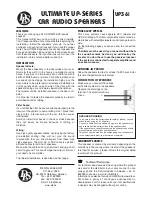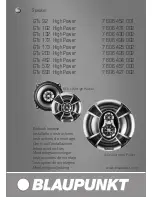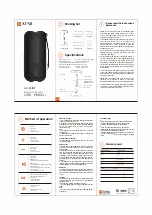
usually take your full weight although they may flex somewhat; the same
goes for roof trusses although they can be prone to more flexure than joists.
It is the walls that hold the joists and trusses up, so when stepping on the
joists or trusses, it is best to do so at a point close to a wall. It is possible to
flex a joist or truss to the point where the fasteners holding the ceiling
drywall to the bottom side of the member can “pop”. If this happens you
may have to perform cosmetic repair to the ceiling drywall where a small
screw head size void or tear appears. As long as the point of the joist or
truss you step upon is within 6' of a supporting wall, you should have no
flexure problems whatsoever.
You should keep the foregoing in mind throughout the entire process of
navigating the attic crawl space when locating volume control/speaker
location access and when running wires to their respective destinations.
In the
lower crawl space area
, insulation “batting” will impede your ability
to see all of what you need to see to determine access. Again, it is advisable
that you
wear a respirator
so as not to breathe in insulation fibers as you
disturb the insulation to gain visual access. Insulation fibers are hazardous
to your health.
Presumably, in the lower crawl space area you will be navigating around on
earth as opposed to construction framing in the attic area, so you will not
have to use the same level of care when moving about.
In the attic area, the tops of the walls are relatively easy to see. This is not
the case in the lower crawl space area. The reason for this is that there is a
layer of sub flooring directly above the floor joists. The walls are fastened
to the top of this sub flooring.
To find the walls from the basement, you will have to look for electrical
wires and plumbing and determine a pattern from them as to where they
transition from below the floor up into the various walls. Sometimes you
may be able to find wall locations from nailing patterns where the wall was
nailed to the floor. Usually, the nails used are longer than the combined
thickness of the sole plate and the sub flooring and hence appear as a rough
line of nail points piercing through the sub floor.
Cutting drywall for the “old work” J-box, volume control mounting rings and
speakers
1.
After determining that the wire head-out location you have chosen has
access up and/or down to a crawl space, basement or attic, you will
determine the exact location for the head-out J-box.
Use an “old work” J-box
(figure 1b)
. Each “gang” when IWM-8BPG
13














































